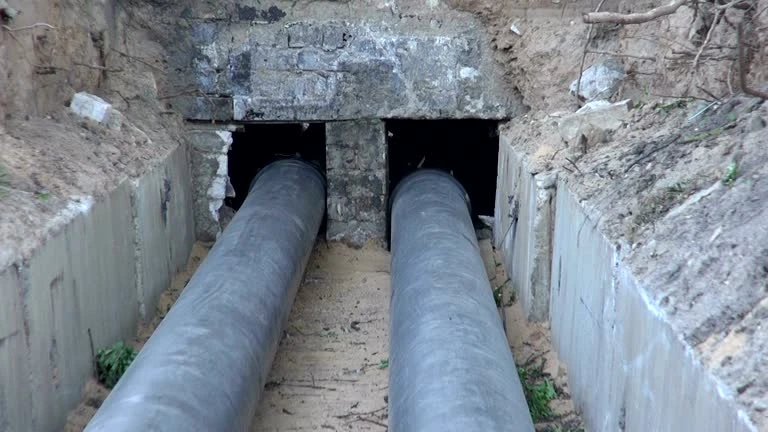Introduction
Iplex, a leading name in the piping industry, has made headlines with its latest advancements in polyethylene PE pipe technology. This strategic move is poised to transform the landscape of pipe press fittings, reinforcing the importance of durable and efficient piping solutions in various applications. As the demand for high-quality PE pipe continues to rise, understanding Iplex’s innovations and their implications for the market is essential for industry stakeholders
Understanding PE Pipes and Pipe Press Fittings
What are PE Pipes?
Polyethylene (PE) pipes are plastic pipes made from high-density polyethylene. Known for their flexibility, lightweight nature, and resistance to corrosion, PE pipes are widely used in applications ranging from water distribution to gas supply. Their properties make them an excellent choice for modern piping systems.
The Importance of Pipe Press Fittings
Pipe press fittings play a crucial role in ensuring that piping systems are secure and leak-proof. These fittings connect pipes effectively, allowing for efficient fluid flow and maintaining system integrity. As the industry shifts towards more sustainable and efficient materials like PE, the role of high-quality pipe press fittings becomes even more critical.

Iplex’s Innovations in PE Pipe Technology
Enhanced Durability and Performance
Iplex’s latest PE pipes are designe for enhanced durability and performance. These advancements are crucial for applications in harsh environments where traditional materials may fail. The incorporation of innovative designs and materials ensures that the pipes can withstand high pressures and extreme temperatures.
Sustainable Manufacturing Practices
Sustainability is at the forefront of Iplex’s manufacturing practices. The company is committe to reducing its environmental footprint by utilizing recycled materials and optimizing production processes. This not only contributes to environmental conservation but also aligns with the growing demand for sustainable construction materials.
Expanding Product Range
With the introduction of large-diameter PE pipes, Iplex is significantly expanding its product range. This new offering caters to various sectors, including infrastructure, agriculture, and mining, where larger pipe sizes are often require. The ability to produce larger pipes with enhanced performance characteristics sets Iplex apart in the competitive market.
Market Trends Influencing PE Pipes and Fittings
Growing Demand for Water Infrastructure
As urban populations expand, the demand for efficient water infrastructure is increasing. PE pipes are gaining popularity due to their ability to deliver clean water efficiently. This trend is further supporte by government initiatives aimed at upgrading aging water systems, creating a favorable market for both PE pipes and associated pipe press fittings.
Advancements in Installation Techniques
The advent of new installation techniques, such as trenchless technology, has transforme how PE pipes and fittings are installed. These methods reduce disruption to existing infrastructure and minimize installation time. The role of pipe press fittings in these innovative techniques is crucial, as they must be reliable and easy to use in various conditions.
Rising Awareness of Environmental Issues
As awareness of environmental issues increases, more construction projects are seeking sustainable materials. PE pipes, being recyclable and environmentally friendly, are gaining traction. This shift is driving demand for pipe press fittings that complement these sustainable practices, emphasizing the need for innovation in this area.
Challenges Facing the PE Pipe Market
Competition from Alternative Materials
While PE pipes have many advantages, they face competition from other materials such as PVC and metal pipes. Each material has its own set of benefits and limitations, making it essential for manufacturers to highlight the unique advantages of PE pipes to maintain market share.
Regulatory Compliance
The piping industry is subject to various regulations that differ by region. Compliance with these regulations can be challenging for manufacturers, especially those expanding into new markets. Iplex must ensure that its PE pipes and fittings meet local standards to avoid potential setbacks.
The Future of PE Pipes and Pipe Press Fittings
Continued Growth in the Market
The future of PE pipes and pipe press fittings looks promising. With increasing urbanization and infrastructure development, the demand for reliable and efficient piping solutions will continue to rise. Iplex’s strategic focus on large-diameter PE pipes positions it well to meet these growing needs.
Innovation and Technology Integration
As technology advances, we can expect further innovations in PE pipe manufacturing and installation. Smart pipe fittings that provide real-time data on flow and pressure will likely emerge, enhancing system performance and maintenance capabilities. Iplex is well-positione to leverage these technological advancements.
Conclusion
Iplex’s significant advancements in large-diameter PE pipes mark a new era in the piping industry. By focusing on durability, sustainability, and expanding its product range, the company is set to influence the market positively. As demand for reliable pipe press fittings continues to grow alongside the use of PE pipes, stakeholders must stay informed about these developments to harness the potential of innovative piping solutions.
FAQ
1. What are the main benefits of using PE pipes?
PE pipes are lightweight, flexible, resistant to corrosion, and have a long lifespan, making them ideal for various applications.
2. How do pipe press fittings work with PE pipes?
Pipe press fittings create secure, leak-proof connections between PE pipes, ensuring efficient fluid flow and system integrity.
3. What is driving the demand for large-diameter PE pipes?
Growing urban populations and the need for modern water infrastructure are key factors driving the demand for larger PE pipes.
4. Are PE pipes environmentally friendly?
Yes, PE pipes are recyclable and have a lower environmental impact compared to traditional materials like PVC and metal.
5. What challenges does the PE pipe market face?
Challenges include competition from alternative materials and compliance with varying regulatory standards across different regions.